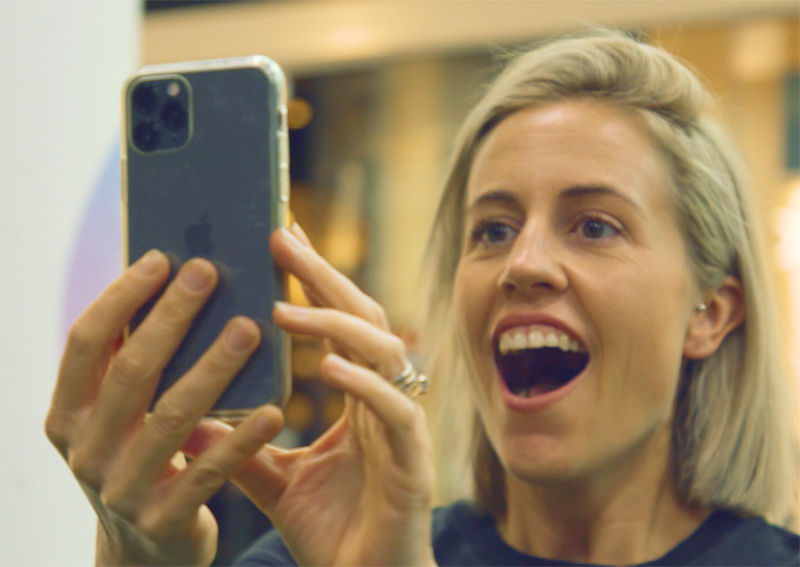Experiential marketing: More than a feeling

David Saraga (pictured below) Managing Director & Creative Director at Gettin Hectic believes there will be more scrutiny on marketing in the next year. Here he explains how rethinking the role of experiential marketing (XM) in a client’s channel mix may help deliver a better performing plan.
It’s been heartening to read about a growing sense of optimism being felt by businesses in WA.
This wasn’t just the view of big business, either. It’s what smaller businesses in the state are feeling: the ones that tend to be most vulnerable and impacted by weakness in the economy.
The Bankwest Curtin Economics Centre suggests that while there remains a degree of trepidation in the unexpected, as was our lockdown experience at the start of this year, overall, we remain firmly optimistic.
For businesses, and marketers specifically, we’re likely to experience more settled conditions. This will demand a greater balance between proactive and reactive planning: welcome news for us in marketing. Importantly, it will provide the opportunity for organisations to re-build their balance sheets, strengthen margins and increase profits in the year ahead.
So, as we set about planning, many will feel greater pressure for marketing to deliver returns to their business. Whilst this is an admirable ambition, is it realistic in the environment we’re in?
The answer is “yes”.
Brittain and Field make a convincing case for marketing being an effective driver of growth in market share and profitability, particularly in the current economic climate.
The key to success is investing proportionately in both tactics that build brand and drive sales/response to rejuvenate your business performance.
As you prepare to develop a harder-working marketing plan, including XM within your suite of tactics, may help to improve the overall return on your marketing investment.



Clearly, being an XM agency, you’d expect us to sing its praises! We’re proud to do so. However, we recognise it’s important to understand its strengths and be aware of its limitations. So, we thought it would be helpful to set out four key insights when considering XM…
1. Keep an open mind
XM is a catch-all description. In its broadest sense it’s an exchange between a person and a brand. The “exchange” can be anything from basic branded merch, to an immersive pop-up experience or even an unforgettable day with one of your idols. Each of these delivers back to your marketing plan in a different way, ranging from simple awareness/association to a lifelong emotional connection.
That’s why being clear on your understanding of XM and what you want it to do for you is important. It can be easy to fall back on how you’ve used it or seen it used before, without understanding the breadth of opportunities available.
2. It’s more than just a campaign tool
Taking a step back and thinking about your broader customer experience can be useful. So, rather than just thinking about XM in a campaign role, consider it as part of a suite of customer touchpoints. Beyond communicating promotional messages, how people interact with your brand really matters. In the words of Mark Ritson: “experience beats communication for most consumers, most of the time”.
Behavioural economics theory agrees – our actions, essentially our experiences, influence our attitudes. By its very nature, XM is the “all-action” channel par excellence. It’s so much more than just a campaign tool.
3. Changing the way people feel changes the way they behave
What makes XM so potent is its ability to create feelings. With all five senses at its disposal, XM brings brands to life very powerfully. In a prior thought piece, we explored this effect. We explained that by stirring (the right) feelings we sustain a behavioural impact in the audience, which is both different and longer lasting, than those generated by other channels.
As a result of COVID, we’re all a bit sensitive right now, so using a channel which can impact feelings and develop an emotional connection with your brand will be particularly powerful. Check out Leslie Zane’s recent thoughts about positivity triggering buying behaviour in the Harvard Business Review.
4. Like any channel, XM is not the only answer
We’re not XM evangelists. XM should always play a strong, but complementary role in the mix of marketing tactics. Whilst most forms of it are unlikely to have the reach of broadcast media channels, those channels have less capability in bringing to life a brand positioning, reaching a target audience or influencing their behaviour.
The key thing is to consider it up front and integrate it into your annual plan.
As we look forward to the year ahead more optimistically, maybe now is the ideal opportunity to take a step back and consider the role of XM.
Go on, it feels right, doesn’t it?

